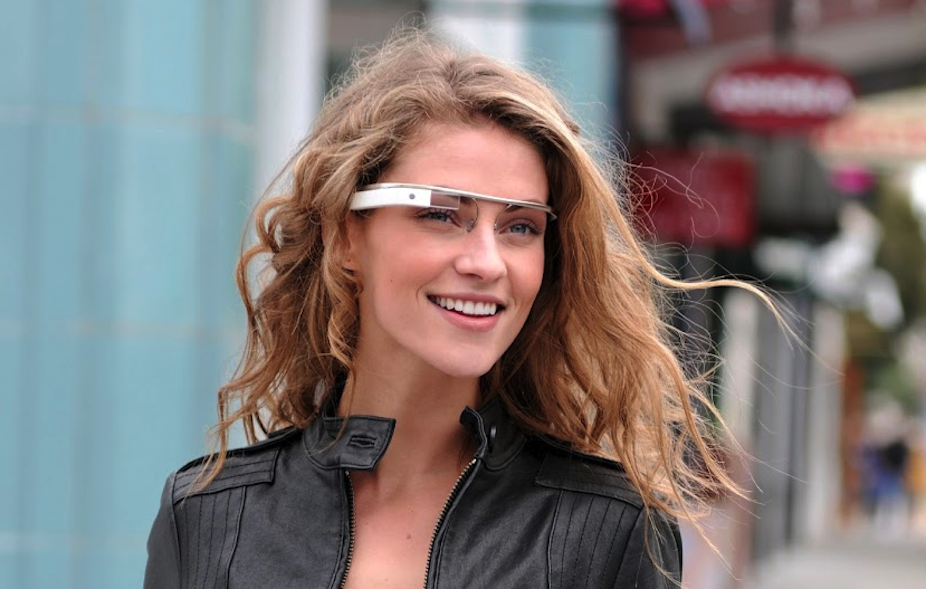Earlier this month, Google released a video (see below) announcing Project Glass: the development of a pair of glasses with a real difference.
Google’s augmented reality eyewear (or “eyeware”) will provide hands-free access to maps, weather information, message notifications and more, all displayed as a virtual layer on top of the user’s regular vision.
Science fiction has been predicting virtual or augmented reality for 50 years - just think of the Terminator films. But perhaps the predicted future has arrived in the shape of a ubiquitous fashion item.
Certainly in the next few years, our visual relationship with the world around us will come with additional layers of information.
Imagine the cityscape becoming the backdrop for 3D, location-specific advertising.
You could be walking down a city street, wearing your augmented reality (AR) glasses, and see someone wearing a pair of shoes you like. Using image recognition the glasses would pick up the brand and style of the shoe then send you to the online store.
To purchase you would only need focus your eyes on the “add to cart” button. And if you hesitated, the shoe retailer might send a virtual salesperson into the space in front of you to try to close the deal.
Advertising content could still be delivered through traditional television-style advertising but, with AR, your eyewear could create 3D models of products you could (virtually) rotate in your hand (in the case of, say, a new watch) or even walk around (in the case of a new car).
This will be the commercial reality of augmented technology and will allow companies such as Google or Facebook to expand the reach and depth of their advertising campaigns.

Building augmented reality
Here at the University of Western Australia, our architecture students have been developing other novel uses for this technology.
The study of past and present buildings is obviously a vital part of an architect’s education. Students currently study images of buildings and plans from history books or the internet.
As part of their course, our students constructed an array of virtual buildings in Perth and the surrounding area. The most outstanding project was a real-scale model of a 30-metre-tall cathedral.
This building was “placed” (in a virtual sense) on the UWA lawn using GPS positioning in Google Earth’s 3D Buildings feature.
After downloading an app to their iPhone or iPad, students could walk through and around the building and get a real feel for the space, rather than just seeing a drawing or computer model.
This works by projecting the real environment using the devices camera and the relative GPS co-ordinates. The latest devices can also track the motion of the device. This creates a simulated space in the real space, all experienced through the screen. The development of AR glasses would make this experience even more immersive.
(Sadly, Google Earth soon got wind of our new cathedral and “switched it off”, given it’s not a true building.)
The opportunity for using AR to teach architects is profound. Indeed, we are already planning an exhibition of architecture in a series of parks around Australia.
If you had the compatible eyeware you would merely turn up in your own time and the ghostly buildings would inhabit the park just as any other building inhabits a city.
No physical gallery space would be required for this exhibition.
Heritage potential
The rise of augmented reality and eyeware will also change the way tourists experience the history of our cities and other locations of historical and cultural significance.
Virtual stories could be played out within historical ruins, with AR layered on top of the existing structure.

Imagine arriving at the ancient Greek theatre at Taormina, Sicily (see above) to see the ruins in their present-day state.
You could then put on your AR eyeware and watch an ancient Greek play be enacted in front of you, with the smoking volcano of Mount Etna in the background.
And the language barrier wouldn’t be a problem. Your eyeware could display subtitles in your language of choice at the bottom of your field of vision.
This cultural theorists’ dream would play out on the inside surface of your eyeware, adding virtual content to your vision of the real-world historical structure.
Keeping your eye on the ball
There’s also a considerable overlap between 3D gaming technology and the capabilities of augmented reality.
If you could use your eyeware to play a game, the game space would no longer be confined to your living room or wherever your mobile gaming device might be.
Instead the game space becomes an overlay of your immediate environment and real-world objects become part of the game world. Indeed, with the Playstation Vita handheld console, such gaming is already possible (see video below).
While Google’s Project Glass is still undergoing testing, it’s clear that AR devices will be with us sooner or later. The advent of eyeware will change the way we communicate, just as smartphones such as the iPhone have.
Where smartphones have merged the internet and daily life in an accessible and often-addictive way, AR eyeware will take it once step further.
This technology will deliver the ability to inhabit a realistic 3D, internet-driven virtual reality while still experiencing reality a the same time.
This vision is both exciting and daunting.

